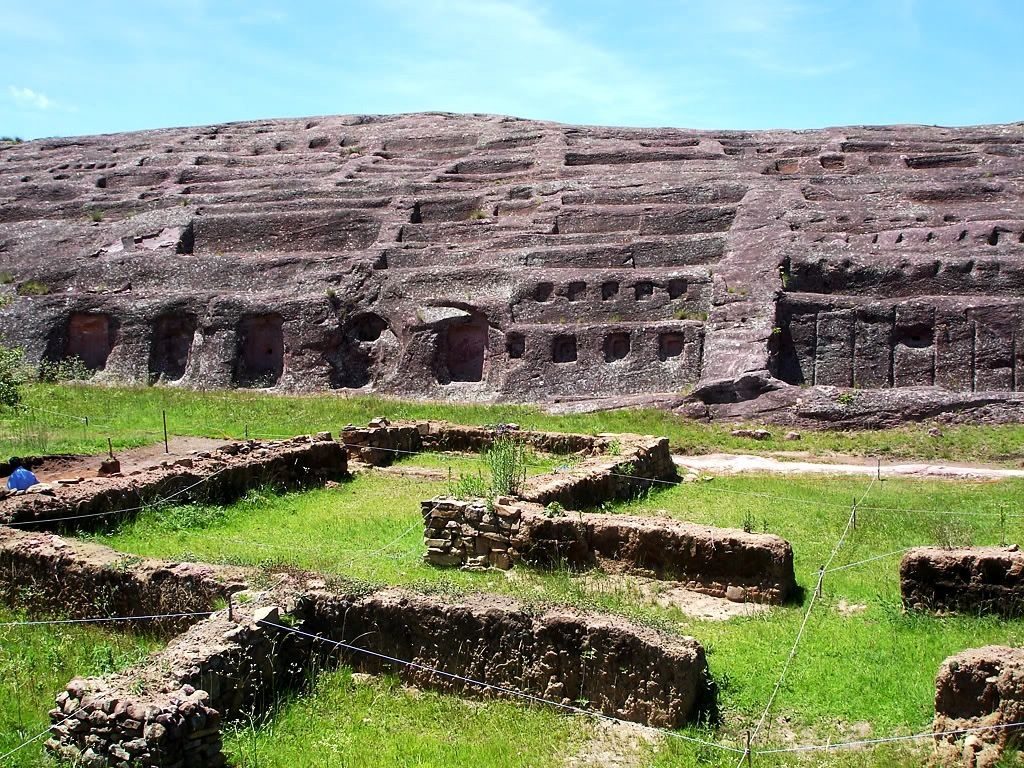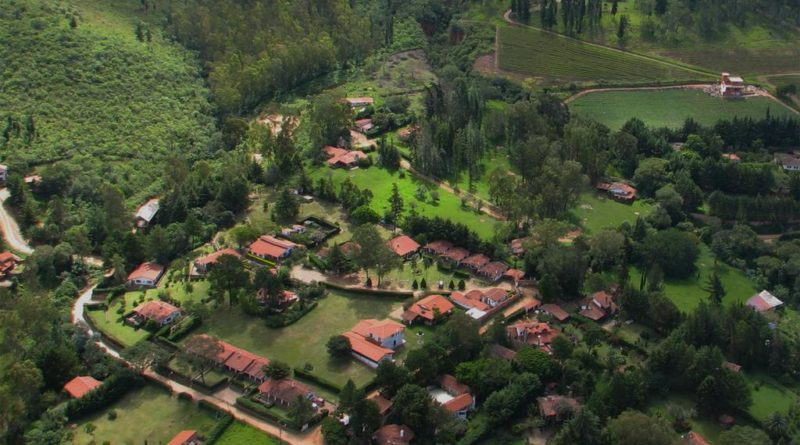Samaipata became a popular travel destination lately, much due to the most terrific sightseeing spot in Santa Cruz – El Fuerte. This archeological monument of Pre-Columbian era was added to the UNESCO Heritage List in Bolivia in 1998. Immediately a calm village of Samaipata received significant glory and popularity. Despite a location on the high hills of Bolivian Andes, numerous fashionable hotels and cafes were established within a settlement. Indeed, travel attractiveness of El Fuerte de Samaipata cannot be exaggerated.
On the Quechua language “Samaipata” means “the rest in mountains”, this is why the village is also visited by local Bolivians, who are eager to explore the remains of ancient civilizations. The first one recorded on Samaipata lands is the Chané people, who built dense villages nearly 2500 years ago. Samaipata is the exact example of their culture, the characteristic feature of which is an adherence to agriculture and hunting. Chanes are the founders and constructors of El Fuerte. There are some Chane burial sites left in the Samaipata neighborhood. The city of Samaipata developed crucially, as Incas set a peace with Chane people. In practice, they built a bigger settlement around momentous fort. Further rulers of Samaipata were Guarani people, who, unlike Incas, conquered the settlement by constant raids to the valley. However, the date of Samaipata’s founding is registered in 1618, by the order of Pedro de Escalante y Mendoza.

The entire history and development of Samaipata is associated with El Fuerte. Despite its visual image of a fortress, there is nothing in common with defense and protection in real. Ancient people built fort for rituals and religious rites, much distributed in prehistoric cultures. The ceremonial set of El Fuerte consists of two main parts. The first one is a hill, full of rock-art images performed by indigenous Indians. Historians assume that religious cults were kept here by the 14-16th centuries. The other part is a large and flat area on the south. It was a perfect territory for Samaipata’s establishment, protected by sacred hills of Andes from Guarani invaders.
The most precious construction of El Fuerte is El Cascabel or “the Rattle”. It maintains two parallel lines, which are directed on east on the 71° azimuth and 6,75° height. Scientists believe that El Cascabel was used for astronomic purposes. The observation of Venus and Jupiter rising is among possible versions. In addition, the rock-art pictures might signify that Chane people watched the flight of Halley’s Comet in 1066.

Besides El Fuerte, Samaipata can boast of other travel attractions in its neighborhood. For instance, Amboró National Park is a cradle of South-American bird species and mammals, among which the special place is taken by ocelots, pumas and spectacled bears. Natural wonders of Samaipata area might be observed while taking a trip to Las Cuevas waterfalls and beaches or to Laguna Volcan, which is a lake in the crater of dormant volcano. For fans of South-American history a visit to neighboring town of Vallegrande may be especially pleasant – it is the place, where well-known revolutionary Che Gevara was buried.

